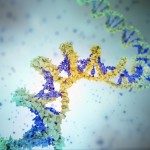Link to Pubmed [PMID] – 28169492
Microb Biotechnol. 2017 Feb 7. doi: 10.1111/1751-7915.12556
Bacteria of the genus Thiomonas are found ubiquitously in arsenic contaminated waters such as acid mine drainage (AMD), where they contribute to the precipitation and the natural bioremediation of arsenic. In these environments, these bacteria have developed a large range of resistance strategies among which the capacity to form particular biofilm structures. The biofilm formation is one of the most ubiquitous adaptive response observed in prokaryotes to various stresses, such as those induced in the presence of toxic compounds. This study focused on the process of biofilm formation in three Thiomonas strains (CB1, CB2 and CB3) isolated from the same AMD. The results obtained here show that these bacteria are all capable of forming biofilms, but the architecture and the kinetics of formation of these biofilms differ depending on whether arsenite is present in the environment and from one strain to another. Indeed, two strains favoured biofilm formation, whereas one favoured motility in the presence of arsenite. To identify the underlying mechanisms, the patterns of expression of some genes possibly involved in the process of biofilm formation were investigated in Thiomonas sp. CB2 in the presence and absence of arsenite, using a transcriptomic approach (RNA-seq). The findings obtained here shed interesting light on how the formation of biofilms, and the motility processes contribute to the adaptation of Thiomonas strains to extreme environments.





